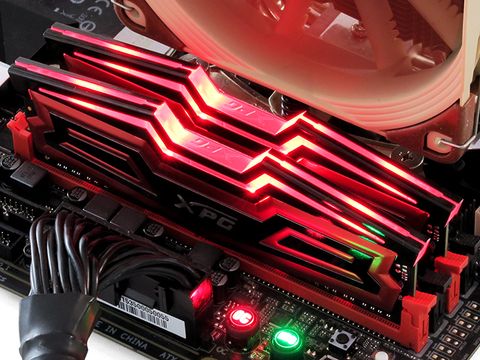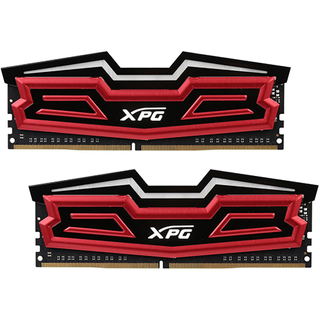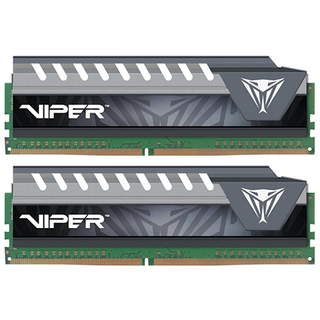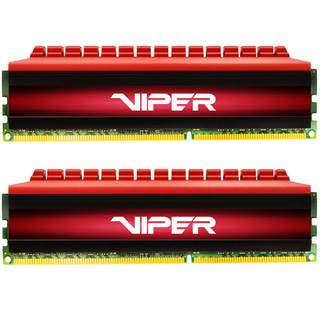Early Verdict
Adata XPG Dazzle DDR4-2800 tempts buyers with a reasonably-priced, low-voltage, LED-lighted, 16GB DDR4-2800 kit. Unfortunately, the firm’s shifted focus to the untested 32GB version leaves us without the ability to issue an award.
Pros
- +
Lower voltage than most performance RAM
- +
Good overall performance
- +
Low-cost LED Bling
Cons
- -
Poor overclocking capability
- -
Spotty availability
Why you can trust Tom's Hardware
Introducing XPG Dazzle
[Editor’s Note: Timing and pricing fluctuations have impacted availability of this product at this capacity (2x 8GB) and rated performance (DDR4 2800) during our test period. We’ve noted this and made some recommendations regarding capacity and performance options in our conclusion notes on page 2.]
The popularity of glass cases has brought with it a resurgence in lighted components, from graphics card fan shrouds with lighted logos to motherboards with lighted faux-traces. Lighted RAM goes back farther to the introduction of side panel windows, and users looking for a good deal on these will appreciate the lowering of prices as production volume increases.

Adata’s XPG Dazzle doesn’t have the fancy RGB lighting of certain high-priced competitors, but it also doesn’t require a separate RGB controller or cable. Instead, its lights follow the classic “breathing” pattern, which speeds up as the memory gets warm.



XPG logos on a frosted clear background are oriented with the bottom facing the socket on most motherboards.



XPG Dazzle DDR4-2800 is programmed with JEDEC-standard DDR4-2133 CAS 15 timings, and boards that support XMP will automatically configure these to rated values after enabling the XMP setting in firmware. Though the CAS 17 timings seem fairly lengthy for DDR4-2800, these coincide with a memory-controller-friendly 1.25V rating.
DDR4 Rated Specification Comparison
Those timings look particularly weak when comparing XGP Dazzle 2800 to our most recent 2x 8GB kits, but it’s important to note that the Dazzle modules are also about 20% cheaper than those rival products. That could be a great sign for value, almost making the LED lighting appear to be a free bonus feature. (Note that in the table above, the pricing reflects the current cost of the DDR4 3000 version of the XGP Dazzle.)
MORE: Best Memory
MORE: DDR DRAM FAQs And Troubleshooting Guide
MORE: All Memory Content
-
lola213 Is Adata going out of business soon or something? I was trying buy RAM from them but it seems I cant find the model I want and I kept hearing that they wont have it.Reply -
JamesSneed Bedazzled RAM isn't that cute. The year of the lets slap LED's on stuff and make it shiny continues.Reply -
SCANNERMAN777 Another company struggling to stay afloat in troubled times. But let's be fair. ADATA has made some pretty tough stuff in the past and what most memory companies won't tell you is they get all get most of their chips from the same place. So whether it's Kingston, Hynix, or Adata it really doesn't matter much now does it? ADATA made the right move going to 16Gb because we will be seeing a lot more of this thing in the future. The demand for "extensive" memory is on the upswing.Reply -
Crashman Reply
I couldn't help but think the word "medazolam" every time I wrote the product name :D19008249 said:Bedazzled RAM isn't that cute. The year of the lets slap LED's on stuff and make it shiny continues.
-
Olle P Isn't it supposed to default at 2,800MHz? (At least with XMP enabled.) Why running it at 2,666MHz and not mention 2,800?Reply -
Crashman Reply
Do you see where it says "Rated Data Rate Rated Timings"? Those results use the XMP settings for each module set.19011180 said:Isn't it supposed to default at 2,800MHz? (At least with XMP enabled.) Why running it at 2,666MHz and not mention 2,800? -
PCDesignerR Well I can't knock it. It seems like a cool idea as long as no performance is sacrificed for the sake of getting the RAM that has the cool LED on top.Reply




